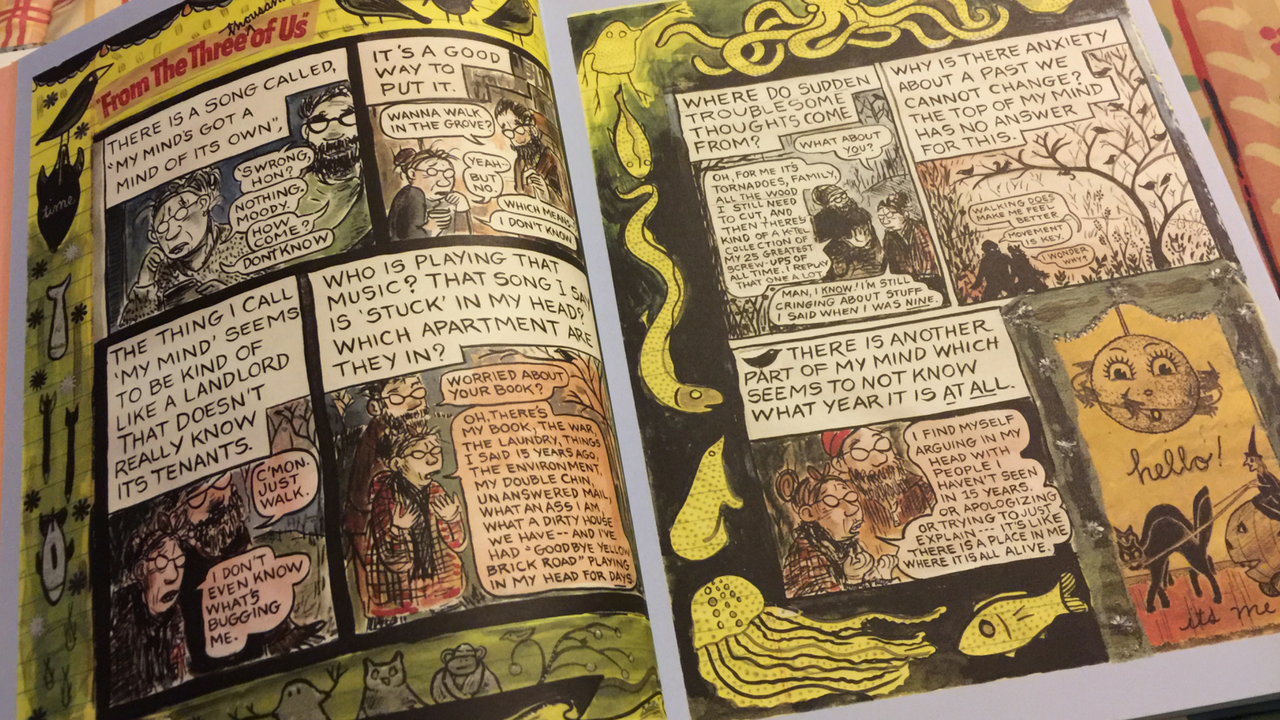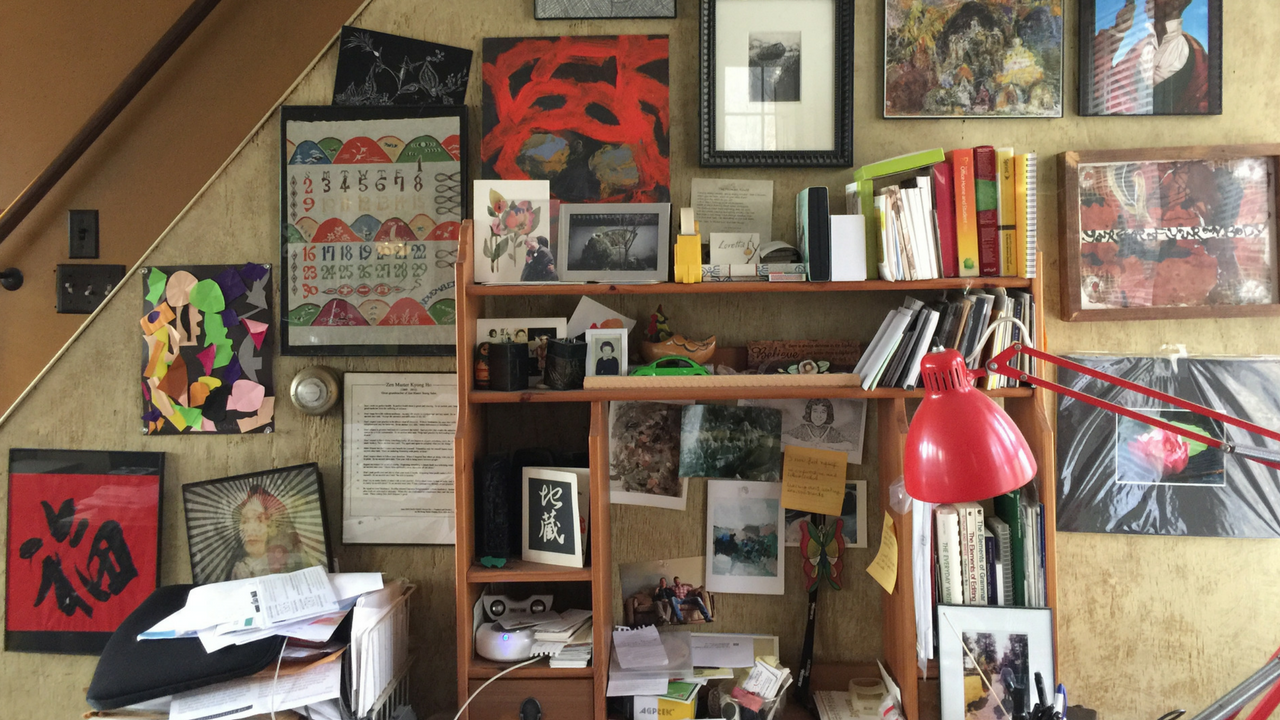Imagine

I've had my fair share of failures, and I've witnessed many that were not my own. Looking closely, I recognize something they all have in common: a failure of the imagination, an inability to envision another possibility. So we get what we get: more of the same, stuckness, boredom, or a dream unrealized.
When we’re able to envision - to see richly with the mind’s eye - possibility opens. Imagining allows us to expand the scope of what we consider - to see past our usual limits. It makes room for more. And when we give ourselves permission to take our imaginings seriously, they have a way of leading us, energizing us to take action. We’re able to see the steps we need to take and take them instead of thinking about them. A rich imagination inspires action.
If you’ve gotten lost in your daydreams and fantasies, you undoubtedly disagree. Maybe your imaginings have produced a state of intoxicated avoidance. You’d rather be in your head than in the world. And yes, that can be the outcome...
Relating through Props & Play

From time to time, I use props in my therapy sessions. They’re great for introducing a sense of play, and for mediating the interaction between me and my client(s). I’ve used the Hoberman Sphere pictured above to demonstrate cognitive concepts to my group therapy clients, opening and closing the sphere to demonstrate flexibility and constriction. Each time, my clients are absolutely alert and attentive. After the demonstration, we pass the sphere around, with each member flexing it to demonstrate their current state.
The barriers that arise during talk therapy can often be overcome by using props, since they support kinesthetic engagement. (Of course, some clients are as resistant to props as they are to speaking.) Sometimes I use a shawl (any length of cloth or rope or even a flexible band would do), holding one end while my client holds the other. We pull, sometimes gently, sometimes firmly, each trying to match the give and take of the other. It’s a dance, but a safe one, mediated ...
Choosing a Career, or Dreaming One?

I lived many professional lives before becoming a therapist. While I was always grateful for those opportunities, I never felt quite “in my element” within those professional communities. Whether design, tech, or academe, I felt like an outsider. So it’s been a blessing to find myself feeling right at home as a therapist.
Oddly, it was never something I considered outright. I wasn’t one of those I’ve-always-wanted-to-help-people kind of people. I was always too engrossed in my own struggles to have much leftover for others. At least that’s what I thought.
So imagine my surprise when one day, a little over 10 years ago, the thought of becoming a therapist crossed my mind. No one could have been more surprised than me. It arose out of nowhere, startling, like a dream. But instead of rejecting it outright as a preposterous idea, I let the dreaminess of it live in me.
Sometimes I took conscious steps to explore the possibility: I looked into going back to school in social work; I bough...
Feeling Your Way Through

If you’re a “talk therapist” like me, you’re used to knowing a client mainly through their story: what they talk about. This typically includes a developmental history, significant life events, and key relationships, all within the context of symptoms from which the client wants relief. But this isn’t the only way to proceed.
I trained in Somatic Experiencing, an approach developed by Dr. Peter Levine to address trauma. Somatic Experiencing sets aside the story to work instead on felt sensation in the body. By setting aside the narrative, clients are able to work their way through trauma by feeling their way through it - noticing sensations that arise, developing the capacity to contain them, and allowing them to resolve.
While Somatic Experiencing is primarily associated with trauma treatment, I use SE skills to work with clients addressing anxiety and other states of “over-activation,” including irritability, anger, and chronic pain. You can try it right now through a simple skill ...
Getting Unstuck in Therapy

Every therapist gets stuck now and then when working with a client, unable to move things forward. While often this gets called "client resistance," doing so ignores the fact that the therapist is participating in the "stuckness" too. Quite actively. (Or passively, as the case may be.) While there are many ways to get unstuck, I regularly remind myself of things that help.
- Are my verbal responses to the client predictable and repetitive? If so, do I attribute this to (i.e. blame) the client instead of recognizing my complicity? Am I able to change my responses in a way that disrupts the cycle of predictability? I find that when I am able to do so, the work shifts.
- If I'm primarily a "talk therapist," do I find opportunities for somatic engagement? Feeling, sensing? Changing sensory channels relieves us from the confines of speech and language. This can be freeing for client and therapist alike. Sometimes I use props to accomplish this - objects that can be handled between us.
- Are ...
Don't Call It Drawing

I can't draw. Almost everyone says it. Me, too. Though I say it a little less than I did. As a teen, I loved arts and crafts, but I shied away from the "arts" part. Drawing seemed scary. I didn't know how to make the image on the paper look like what I saw. And when what emerged on the page looked like failure, it scared me even more.
I'm not sure what happened between then and now. I still can't draw, but it doesn't matter so much. When I do draw (not often), I'm more comfortable with what happens on the page. I'm more at ease letting it be whatever it is, usually a scribble or outline or gesture. I'm okay with letting a line ramble, with letting go of mastery and expectation.
I certainly admire great drawings by great artists, and I recognize the magnitude of those achievements. I know that what I do isn't the same. I can tell the difference. Maybe it's not drawing.
Maybe that's why I feel more comfortable now: because I can recognize the difference and feel okay about it. Okay i...
The Intrepid Lynda Barry

Lynda Barry’s wonderful book, What It Is, is part cartoon memoir, part practical guide to creative writing, part philosophical treatise on the intersection of images and words, part meditation on terrors of childhood. No other book reminds me so poignantly of childhood yearnings: the deep questioning that accompanies a child’s desire to understand one’s place in the scheme of things, the dubious realm of adulthood, and the struggle to maintain self-esteem in an ever-shaming world.
Barry’s recipe for creative writing uses visualization as an entry point. She steps you through a sequence that includes choosing a word and visualizing the image it elicits, then entering the image and orienting yourself to it. Her exercises take you deeper and deeper into the imaginative possibilities of the scene you find yourself in, freeing you up in the process.
If you’re working through procrastination, doubt, and shame about your own creative capacities, Barry's your guide.
Romare Bearden: Artist as Social Worker

I remember when I discovered that artist Romare Bearden was a social worker. I had long admired his paintings and collages for capturing black life in ways that felt socially real and graphically innovative. By juxtaposing lyrical painted elements with cut-out photographs, he created work that often felt brusque and startling, demanding serious attention. His 1967 work, Three Folk Musicians (above), expresses his unique sensibility.
I wondered what his days, nights, and weekends were like. I wondered if he daydreamed art during his workdays, and whether those dreams helped him endure long days filled with a mix of challenging cases, bureaucracy, and tedium.
Daydreaming at work can provide a vitally important refuge for imaginative freedom.
Have you daydreamed lately?
A New Creative Adventure

If you're reading this, welcome to my very first blog post! I'm thrilled that you came to my website with enough curiosity to dig a little deeper. You may well be my very first reader.
I wonder whether to share what I'm about to say, for fear of seeming too candid, maybe "unprofessional." But I realize I want to let you know that The More Creative Therapist is a brand new adventure for me. I don't have course and coaching material already packaged that I've decided to sell online. It's all brand new. A work in progress. And so far, what a journey! I'm learning new digital production tools, diving into social media, and culling from decades of experience to harvest lessons learned that I think will benefit you.
Part of me hesitates to let this be known. After all, chances are we don't know each other. Maybe you found your way to this site through Facebook or a Google search. Maybe you joined my (also brand new) email list, and you want to know more. Perhaps your curiosity is tinged wi...
